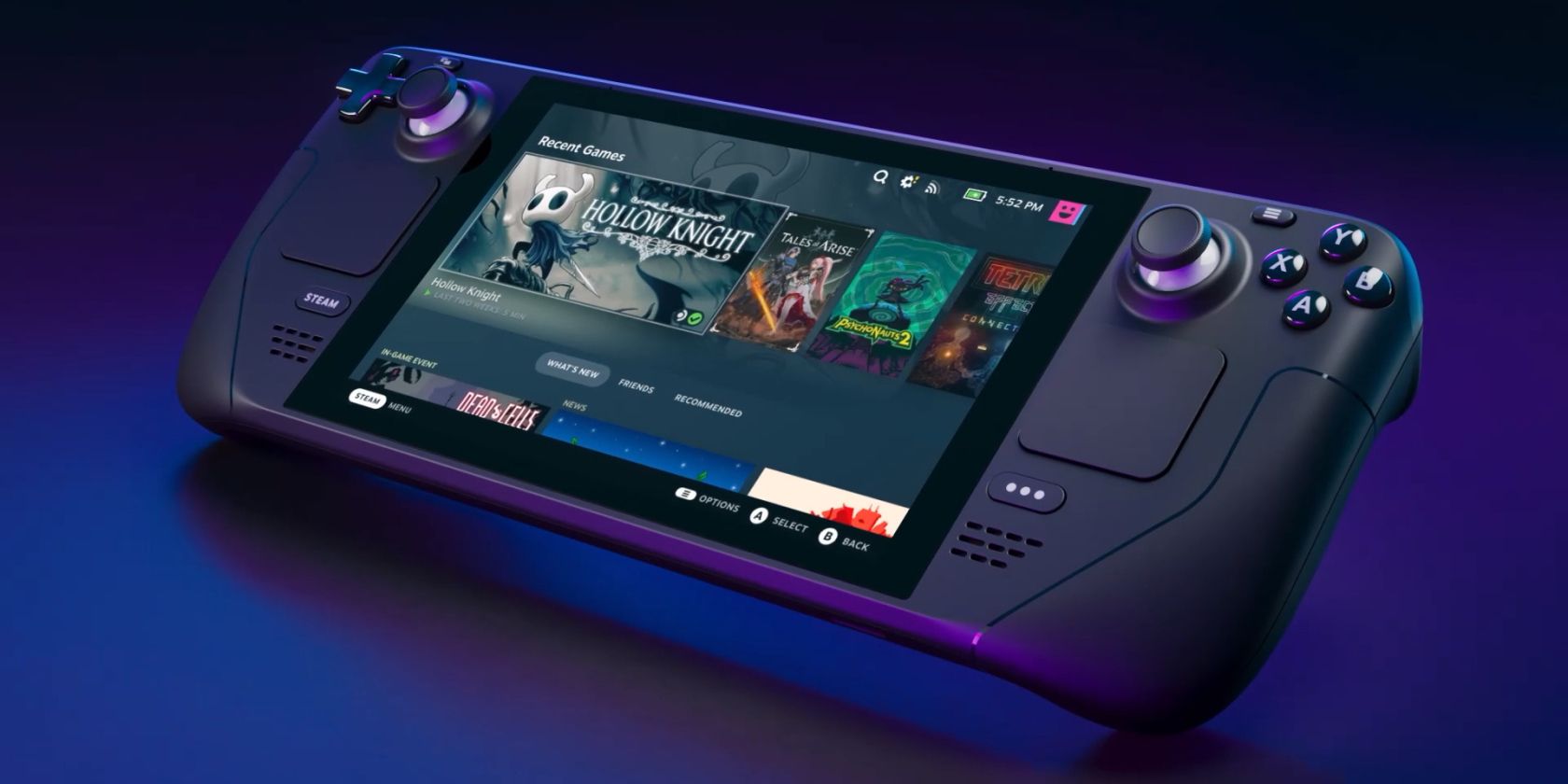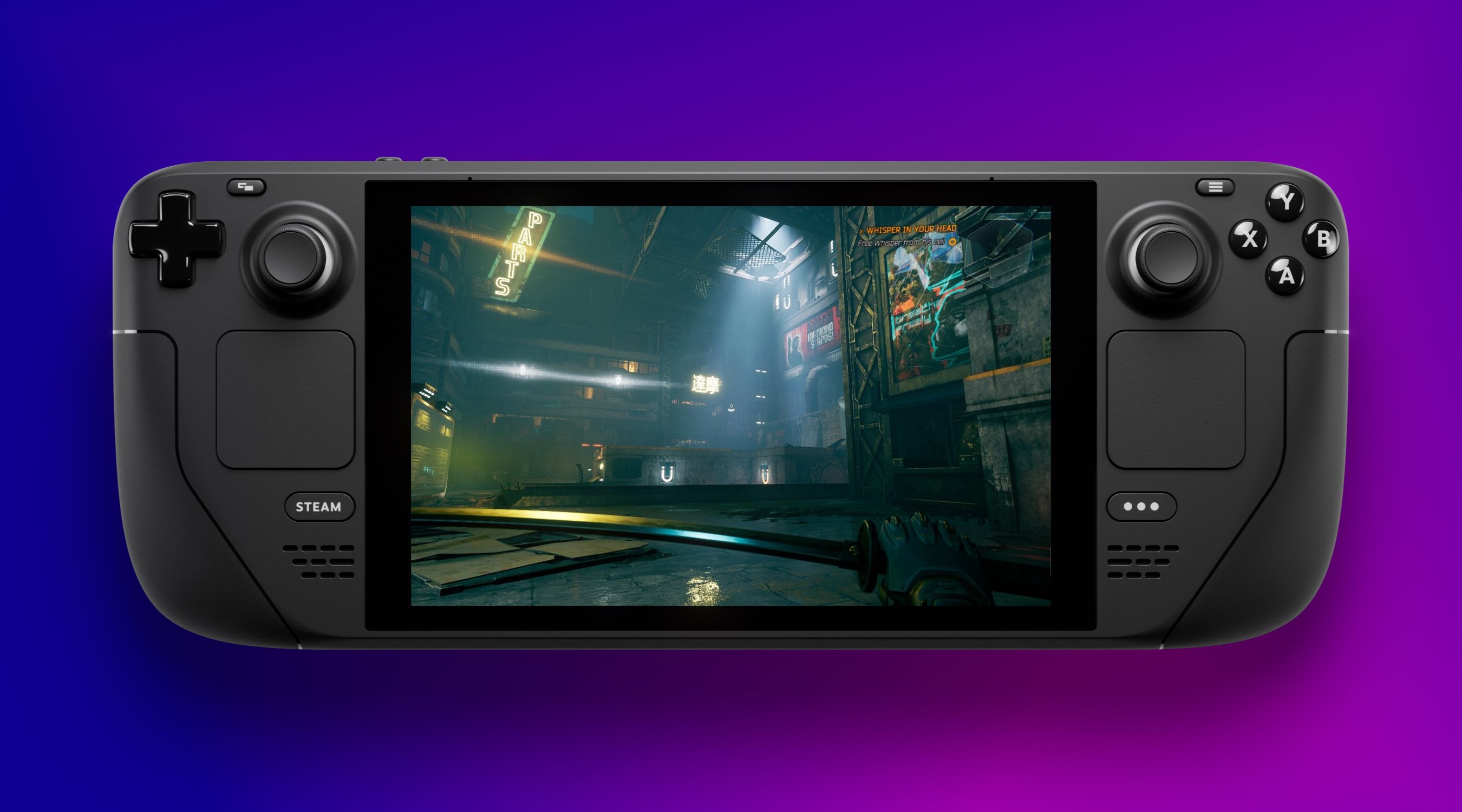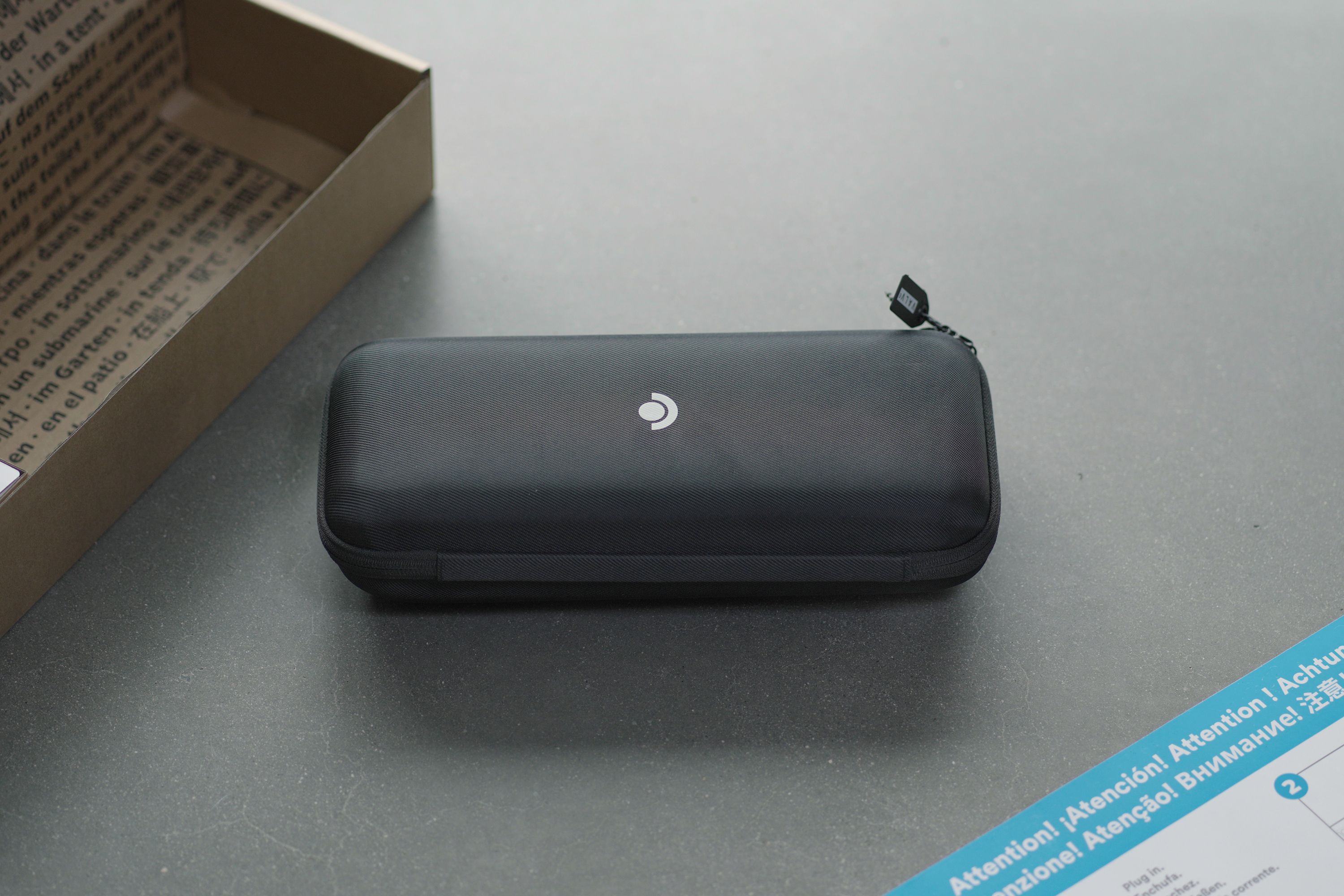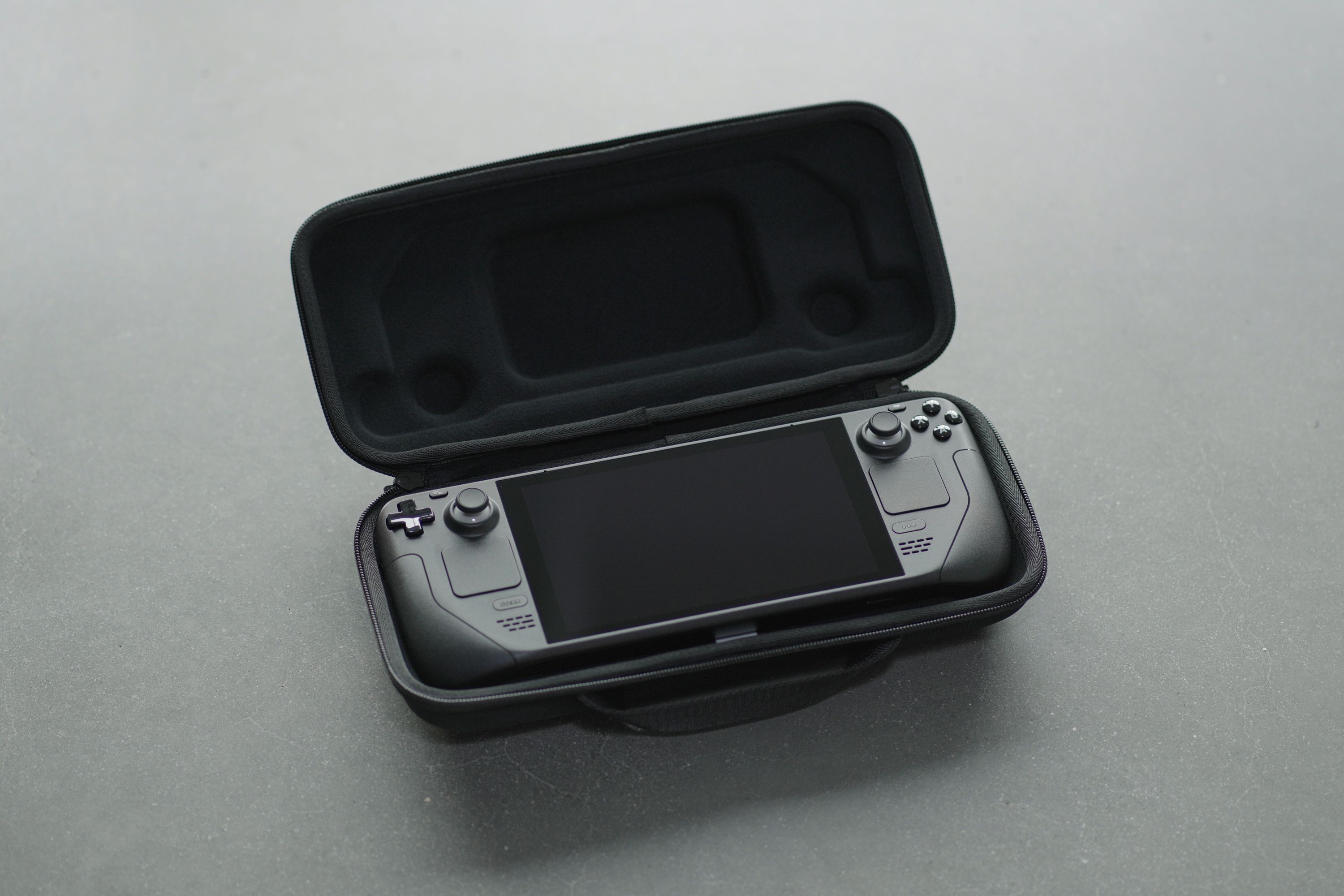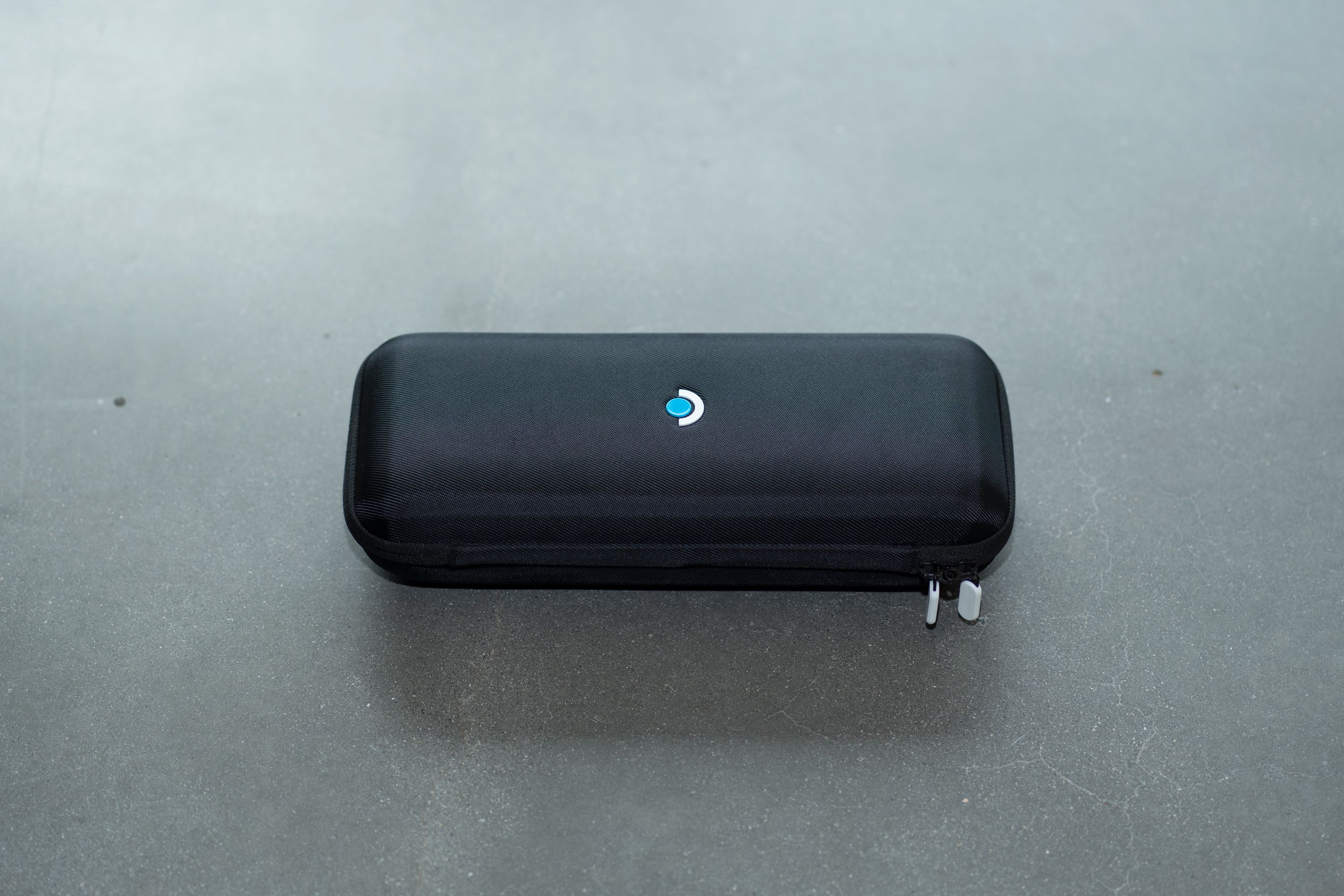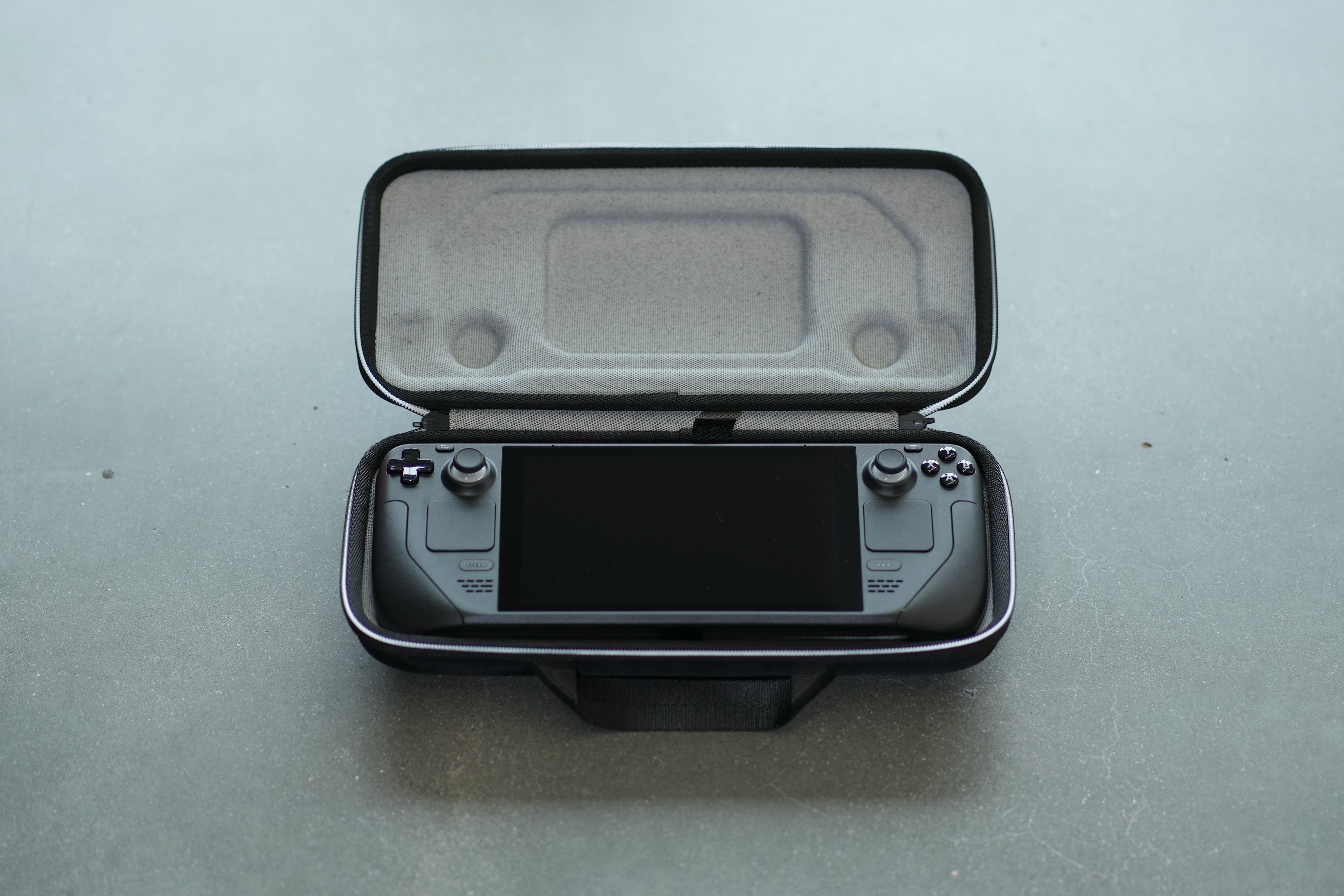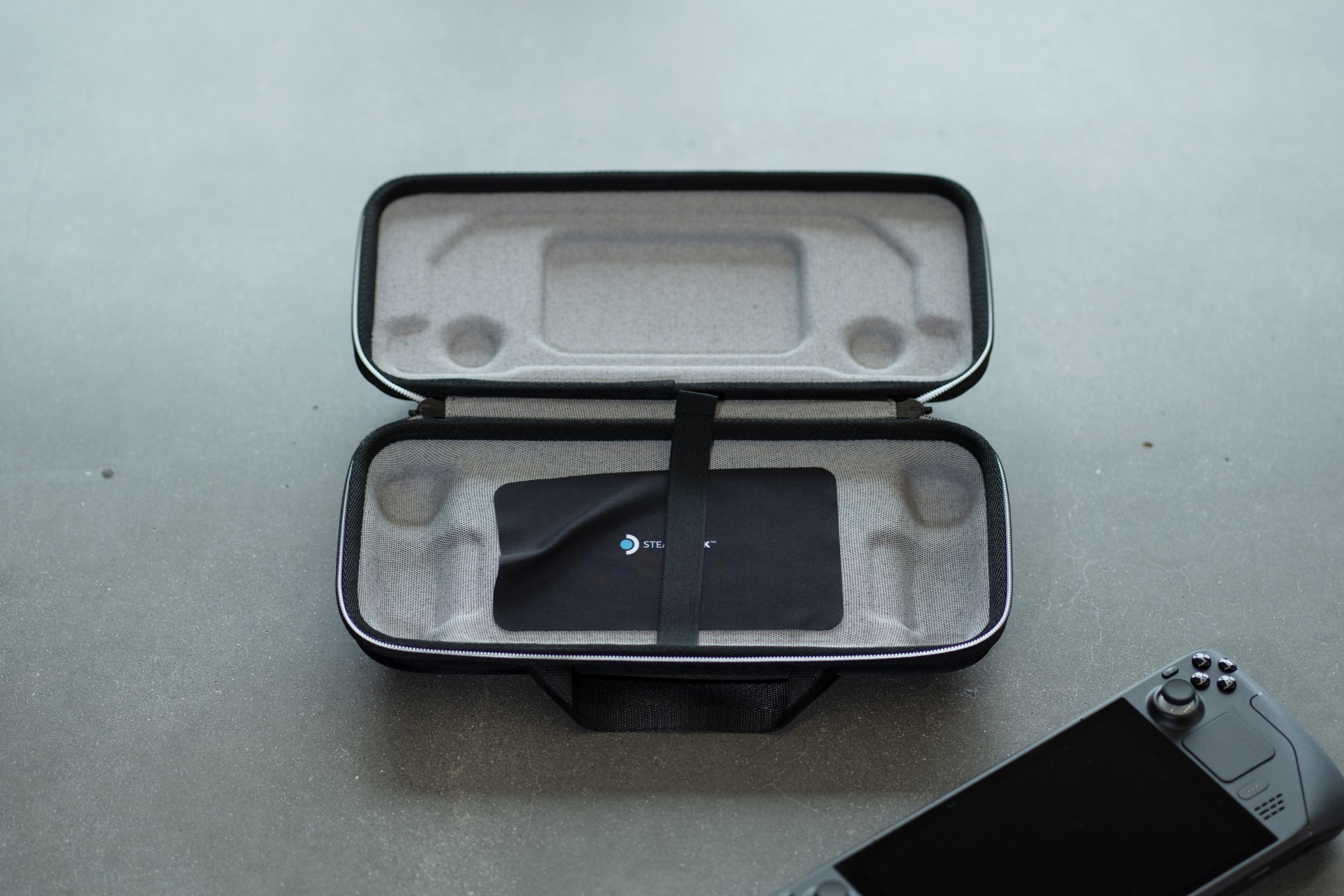At its core, the Steam Deck is a gaming PC. It's a powerful piece of kit that brings your Steam library into your hands, so you can play your PC games wherever you are. If you're thinking of buying a Steam Deck, you might have noticed that there are different versions. How do you know which to buy?We're going to explain the difference between the three models of Steam Deck, along with offering some advice on which is best for you.
What Are the Differences Between the Steam Deck Models?
There are three versions of the Steam Deck that differentiate on price, storage capacity and type, anti-glare screen, and bonus goodies like a virtual keyboard theme.
|
Model 1 |
Model 2 |
Model 3 |
|
|---|---|---|---|
|
Cost |
$399 |
$529 |
$649 |
|
Storage capacity |
64GB |
256GB |
512GB |
|
Storage type |
eMMC |
NVMe SSD |
NVMe SSD |
|
Extras |
|
|
|
Storage aside, the hardware inside all three Steam Deck models is identical. It includes an AMD APU (combining Zen 2 and RDNA 2 architectures), 16GB RAM, Bluetooth, Wi-Fi, 40Whr battery, and runs SteamOS. Every model supports the optional Steam Deck Docking Station.
Providing a game passes the Steam Deck compatibility check, Valve's handheld can run it, albeit for more intense games you'll need to crank down the graphics if you want 60 frames per second.
For full information on the hardware, see Valve's Steam Deck tech specs page.
Do You Need Greater Storage?
The most significant difference between the three Steam Deck models is the storage. Before we compare, it's worth noting that all Steam Deck models support expandable storage via microSD or USB 3.0 storage devices, but your games will always run most efficiently from the internal storage.
First, all three models have different capacities: 64GB, 256GB, and 512GB. Your decision here depends on the types of games you play and how many you want to have installed simultaneously.
If mostly play visual novels, puzzle games, and platformers, these generally don't require loads of storage space. However, if you enjoy AAA titles, these often demand plenty of space—Red Dead Redemption 2 needs 150GB, for example, so it won't fit on the internal storage of the Steam Deck's base model.
Consider also how many games you require on your Steam Deck at any one time. Of course, you can download and (un)install as required, but what if you're without internet? If you want plenty of games available at your fingertips, 64GB isn't going to cut it.
Second, the models use different storage technologies. The 64GB model uses eMMC, while the 256GB and 512GB models use NVMe SSD (which is a faster technology). According to Valve, the 64GB eMMC loads games 12.5% slower compared to the 512GB NVMe SSD. For boot speeds, the former is 25% slower than the latter. Also, because of the way that NVMe scales, the 512GB model is quicker than the 256GB model.
You can replace the internal storage, though it's a delicate procedure only for the tech-savvy. As such, make your choice carefully. If you play storage-hungry games and want as many installed at once as possible, get the 512GB Deck. Otherwise, for most people, the 256GB model will be plenty adequate.
Is the Anti-Glare Screen Worth It?
Every model of the Steam Deck has the same display hardware:
- Panel: Optically bonded IPS LCD
- Resolution: 1280 x 800 pixels (16:10 aspect ratio)
- Size: 7 inches diagonal
- Brightness: 400 nits
- Refresh rate: 60Hz
Whichever model you choose, you should find the Steam Deck's screen to be crisp, bright, and colorful. While it can't compete with the vivid display on the OLED Nintendo Switch, it's still decent.
The difference with the $649 model of the Steam Deck is that the screen has anti-glare etched glass. This means it should be easier to see in bright environments—like playing outside on a sunny day.
According to PC Gamer, with the Steam Deck at maximum brightness and the sun beaming, you can still comfortably make out what's on the anti-glare screen. However, it noted that the screen does struggle outdoors when you're playing a particularly dark game.
TechRadar claims that "while the anti-glare coating certainly reduces reflections, it’s not enough of a change to justify the higher price".
In our review of the Steam Deck, using the $529 model with the standard screen, we found that it "wasn't bright enough to play a dark game ... outdoors, even in the early evening."
Ultimately, it depends on where you plan to play your Steam Deck. While the $649 model has the better screen, if you'll mostly play indoors then you'll rarely see the benefit. However, if you live in a sunny climate and plan to play outdoors, consider the upgrade.
What's the Deal With the Carrying Cases?
All versions of the Steam Deck come with a carrying case, though the $649 model comes with what Valve calls an "exclusive" version—it has aesthetic tweaks and includes two minor accessories.
The two pictures above show the regular carrying case which comes with the $399 and $529 models. The case zips up, has a carrying handle, and has a padded interior. The back of the case has a storage pocket and an elastic retaining band.
The four pictures above show the carrying case with the $649 model. While functionally the same, the front logo is a different color, and the zipper pulls and interior fabric are different. It also comes with a drawstring pouch for the charger and a microfiber cleaning cloth.
While a pouch for the power cord is handy, it's not vital, and you can easily pick up cheap microfiber cleaning cloths. Plus, the aesthetic changes are purely that—you may even prefer the all-black look of the standard case. Overall, there's really no need to base your Steam Deck purchase decision on the carrying case.
What About the Steam Deck's Virtual Goodies?
There are plenty of ways to customize your Steam profile, like with a background and avatar border, and you can grab these from the Steam Points Shop. The $529 and $649 models of the Steam Deck come with an exclusive Steam Community profile bundle, only available through purchase of a Deck, which you can see in the video above.
The $649 Deck includes the profile bundle plus an exclusive virtual keyboard theme, which you can see in Valve's tweet above. It makes the on-screen keyboard of the Steam Deck look like a mechanical keyboard.
These virtual goodies are fun, but minor. It's likely they won't impact your purchase decision. Besides, there's a whole wealth of Steam profile customization options already available, and the Steam Deck has other keyboard themes to choose from.
Which Steam Deck Is Best?
The main factor you need to consider when weighing up the three Steam Deck models is the storage. While the anti-glare screen, fancier carrying case, and virtual goodies are all nice, they're not essential.
Importantly, you want to have enough space to install the games you like to play. For most people, the $529 256GB model is the best match for functionality and price. If your budget can handle it, go for the $649 512GB Deck because it's undoubtedly the best. And unless you're cash strapped, avoid the $399 64GB model due to its slower run and boot speeds.
All that said, you're likely to enjoy whichever Steam Deck you decide to buy. Valve has created something special.

